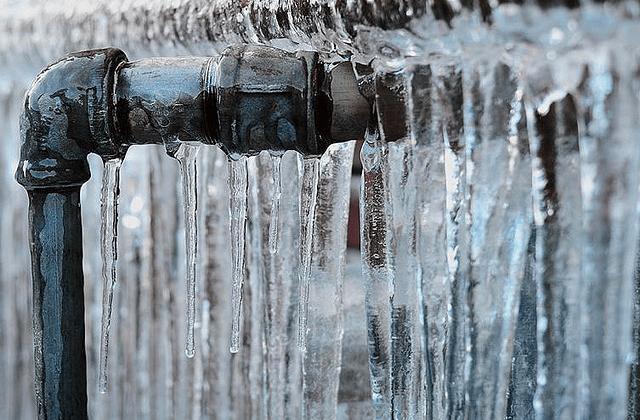Avoiding Frozen Pipes: Top Methods for Winter
Call TodayThis great article underneath in relation to Preventing and dealing with frozen pipes is really enlightening. Don't miss it.

Winter can ruin your plumbing, especially by freezing pipes. Right here's exactly how to prevent it from occurring and what to do if it does.
Intro
As temperature levels drop, the danger of icy pipes rises, potentially causing costly repair work and water damages. Understanding how to avoid icy pipelines is critical for property owners in chilly climates.
Prevention Tips
Insulating vulnerable pipelines
Cover pipes in insulation sleeves or use warm tape to secure them from freezing temperatures. Focus on pipelines in unheated or outside locations of the home.
Home heating techniques
Maintain interior areas appropriately heated, especially locations with pipes. Open up closet doors to permit cozy air to flow around pipes under sinks.
How to recognize frozen pipes
Search for decreased water flow from taps, uncommon smells or sounds from pipes, and visible frost on subjected pipes.
Long-Term Solutions
Architectural adjustments
Take into consideration rerouting pipes far from exterior wall surfaces or unheated areas. Include added insulation to attics, basements, and crawl spaces.
Upgrading insulation
Invest in premium insulation for pipelines, attic rooms, and walls. Appropriate insulation aids maintain consistent temperatures and lowers the danger of icy pipelines.
Protecting Exterior Plumbing
Garden pipes and outside faucets
Separate and drain pipes garden hose pipes before wintertime. Set up frost-proof faucets or cover outside faucets with shielded caps.
Comprehending Icy Pipes
What causes pipelines to freeze?
Pipes freeze when exposed to temperatures listed below 32 ° F (0 ° C) for extended periods. As water inside the pipes freezes, it expands, putting pressure on the pipeline wall surfaces and potentially causing them to burst.
Threats and damages
Icy pipes can result in water system disruptions, property damages, and pricey repair services. Ruptured pipes can flooding homes and create extensive structural damages.
Indicators of Frozen Water Lines
Determining icy pipelines early can stop them from bursting.
What to Do If Your Pipes Freeze
Immediate actions to take
If you think frozen pipelines, keep faucets open to relieve stress as the ice melts. Use a hairdryer or towels soaked in warm water to thaw pipelines slowly.
Conclusion
Protecting against frozen pipes calls for proactive steps and quick actions. By understanding the reasons, indicators, and preventive measures, house owners can safeguard their plumbing throughout winter.
6 Proven Ways to Prevent Frozen Pipes and Protect Your Home
Disconnect and Drain Garden Hoses
Before winter arrives, start by disconnecting your garden hoses and draining any remaining water. Close the shut-off valves that supply outdoor hose bibs and leave the outdoor faucet open to allow any residual water to drain. For extra protection, consider using faucet covers throughout the colder months. It’s also important to drain water from any sprinkler supply lines following the manufacturer’s directions.
Insulate Exposed Pipes
Insulating your pipes is an effective way to prevent freezing. Pipe insulation is readily available at home improvement stores and is relatively inexpensive. Pay close attention to pipes in unheated areas such as the attic, basement, crawl spaces, or garage. Apply foam insulation generously to create a buffer against the cold. You can also wrap your pipes in heat tape or thermostat-controlled heat cables for added warmth.
Seal Air Leaks
Inspect your home for any cracks or openings that could let in cold air. Seal any holes around the piping in interior or exterior walls, as well as the sill plates where your home rests on its foundation. Additionally, make sure to keep your garage door closed unless you’re entering or exiting. Leaving it open creates a significant air leak that can lead to frozen pipes.
Allow Warm Air Circulation
During cold snaps, it’s essential to allow warm air to circulate evenly throughout your home. Leave interior doors ajar to promote better airflow. Open kitchen and bathroom cabinets to help distribute heat consistently around the rooms. If you have small children or pets, be sure to remove any household chemicals or potentially harmful cleaners from open cabinets for safety.
Let Faucets Drip
A small trickle of water can make a big difference in preventing ice formation inside your pipes. When temperatures drop significantly, start a drip of water from all faucets served by exposed pipes. This continuous flow helps prevent the water from freezing. Additionally, running a few faucets slightly can relieve pressure inside the pipes, reducing the chances of a rupture if the water inside does freeze.
https://choateshvac.com/6-proven-ways-to-prevent-frozen-pipes-and-protect-your-home/
.jpg)
Do you like reading up on How To Avoid Freezing Pipes? Post a review down the page. We'd be happy to listen to your opinions about this article. In hopes that you visit us again soon. Enjoyed our blog? Please quickly share it. Let other people find it. Thanks a lot for taking the time to read it.
Explore Now